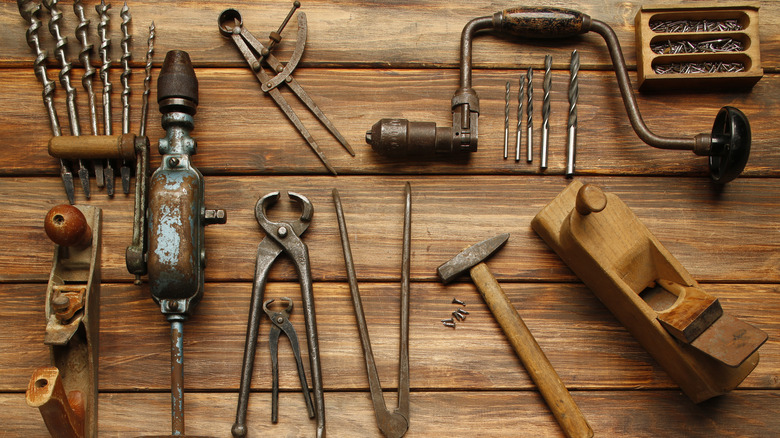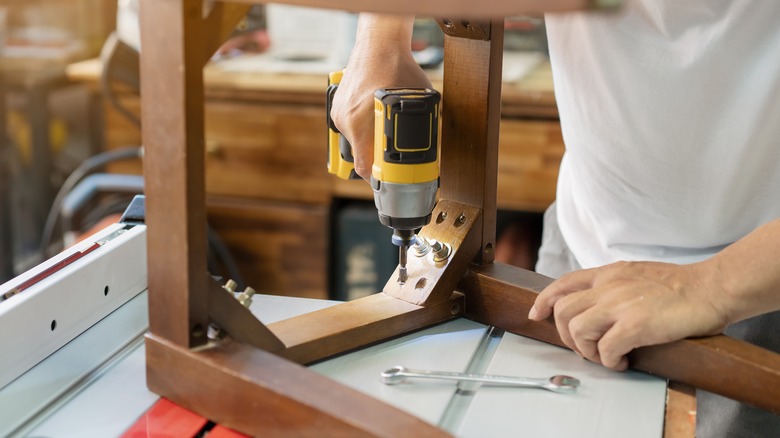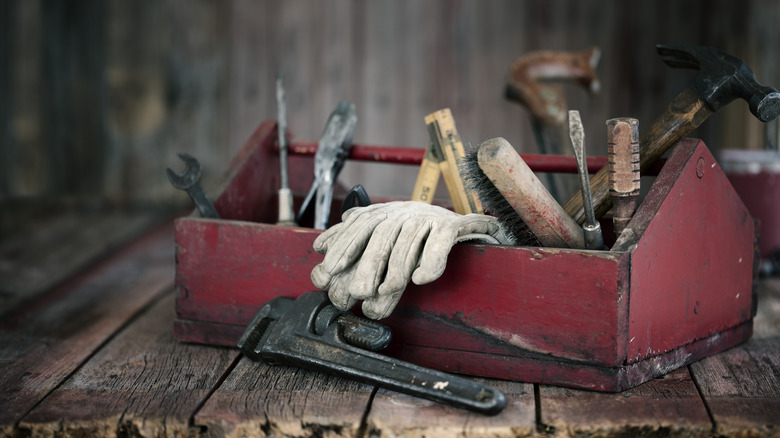Are Your Vintage Tools Worth Good Money? Here's How To Tell
Valuable antiques go far beyond the interior of your home. While many people spend time venturing around markets for antique decor or cleaning up ornate, handed-down furniture that'll soon get a place in their house, these aren't the only impressive finds you should seek out or the only possible high-value items that might already be in your possession. Your garage and shed might have a whole host of hidden treasures that are just as valuable — if not more so.
The unassuming saws, precision tools, and specialty bits from decades past that are collecting dust in old toolboxes and on shelves may be worth a lot of money. Even if you rely on a newer set of tools for repairs around your home, determining what types of vintage tools you own and their current value can pay off. If you're a fan of handiwork, renovations, and building, you should know which vintage tools are good quality and decent enough to replace your shiny new power tools. Here's what to know about antique and vintage tools, including which are worth most and if they are better than modern options.
Which vintage tools are worth the most money?
Before you scour your garage for that old tool set or hunt for some antique tools, it's worth noting that not every old tool is worth large sums of money. It depends largely on the condition and type of tool. Unfortunately, popular items like hammers and screwdrivers (which are easy to get today and just as good) won't sell for much. It also depends on your goal. If you're looking to sell antique tools, collectors are most interested in rare items with specialty uses or have been crafted with exceptional attention to detail (think fancy handles and gorgeous design work).
If you're after antique tools to use instead of modern versions, tools made before the 20th century are a good investment because they were made domestically from quality materials such as wrought iron and leather, leading to better dependability and longevity. Condition matters too. Broken, rusty tools aren't very useful. However, leave any patina in place, as it's often regarded as desirable. Patina hints at the tool's age and helps keep blades, ends, handles, and bits protected.
Are vintage tools better quality than their newer counterparts?
People often like to say that the quality of home goods and tools has tanked over the last several decades. Whether it's a couch or a set of tools, you've likely heard someone mumble, "They don't make them like they used to." While that's a broad, sweeping statement, there is some truth in this when it comes to tools. There are a handful of reasons why this is the case.
For one, toolmakers were capable of crafting superb, fit-for-purpose tools of high-quality materials. They taught this knowledge and the importance of quality to others. There also wasn't a focus on making enormous quantities for less. Today, there is pressure for brands to cut costs, and this is often at the expense of material quality. While you may want to sell vintage tools to buy the shiniest new set on the market, there is something to be said for keeping old tools that have been left in good condition as they might be better than newer models you can buy today.
Even if you find that your tools aren't worth much or aren't in the best working condition, there are many ways to repurpose old garden tools and ancient-looking tool kits into other useful items for your home or outdoor area, whether they are reimagined as a bird feeder or decorative pieces of art.


